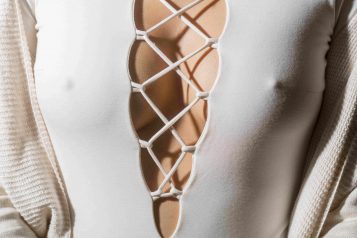Springhouse Derm is an integrated skin health and wellness center led by double Board-Certified Dermatologist Margo Weishar, MD. We offer patients a comprehensive approach to skin including the most current technology in laser medicine, advanced use of injectables by expert physicians, and a team of experienced practitioners to provide your care. As dermatologists, we are uniquely able to care for all medical skin concerns as well as cosmetic needs, integrating the latest techniques and technology in skin wellness. Haute Beauty sat down with Dr. Margo Weishar to discuss what to do if you have skin pigmentation.
 Photo Credit: Shutterstock
Photo Credit: Shutterstock
While the summertime is great for outdoor activities, many people come to us in the fall with one major concern: uneven pigmentation. Sun exposure is the #1 source of uneven pigmentation and brown spots, but Springhouse Derm is here to walk you through options for eliminating unwanted pigment, and for preventing it in the first place!
Pigmentation can appear on the skin in the form of sunspots, patches of discoloration, or marks left behind from damage to the skin. Some skin types are more prone to developing unwanted pigmentation, so they must pay extra attention to protecting their skin and treating areas when they occur.
How can skin pigmentation be treated?
The best treatment for unwanted pigment is prevention, by incorporating the right type of sunscreen into your regimen. The “right type” includes a zinc-based sunscreen with iron oxide. These sunscreens do not contain chemicals and will block both indoor and outdoor light. We also want to protect from the blue light that emanates off things like our computer screens, which can stimulate new pigment to form.
There are various lightening agents and treatments available based on the patient’s skin type and cause of uneven pigmentation. These include:
- Topical treatments
- Supplements
- Procedures (Chemical Peels, Lasers)
Topical Treatments
While over the counter topical treatments may provide some improvement, they rarely have enough power to truly eliminate uneven skin tone. Some of the topical products we recommend are prescription-grade ingredients like hydroquinone, kojic acid, azelaic acid, or tranexamic acid.
Laser Options
Lasers must be used with care when treating pigmentation. Two of the safest and most effective laser treatments available are the PICO and Clear & Brilliant lasers.
The PICO laser is one of the most advanced lasers on the market to treat pigmentation for people of every skin type. A typical brown spot treatment with the PICO laser has a 90% clearance rate with just one treatment. For diffuse pigmentation, which we refer to as melasma sometimes caused by hormonal changes such as pregnancy, several treatments may be necessary. Some patients treat as often as monthly, and we recommend a topical regimen to enhance and maintain the results.
The Clear + Brilliant laser is a fractional laser that we use to deliver a topical treatment into the skin. The laser helps to break up the pigment in the skin and opens channels deep into the skin, which allows for optimal penetration of active topical ingredients.
Chemical Peels
Chemical peels of different kinds can also be effective in removing and maintaining different forms of pigmentation – an old standard. There are many different forms and levels of chemical peeling. Not all peels are the same, so a trusted expert is a must in selecting the right treatment for you.
Are there other at-home remedies for pigmentation or is sunscreen the #1 remedy?
To treat and prevent pigmentation, you have to be vigilant! Regardless of skin type, everyone needs a good zinc-based sunscreen in their life. We always recommend at least an SPF of 50, and if it is tinted that can help boost protection. If you are prone to pigmentation, daily sunscreen use is a must, as certain types of pigmentation – like melasma – can flare as a result of indoor light, computer screens, and heat. It takes time and commitment, but with the right
For more information, visit Dr. Brian A. Levine's social media:

























